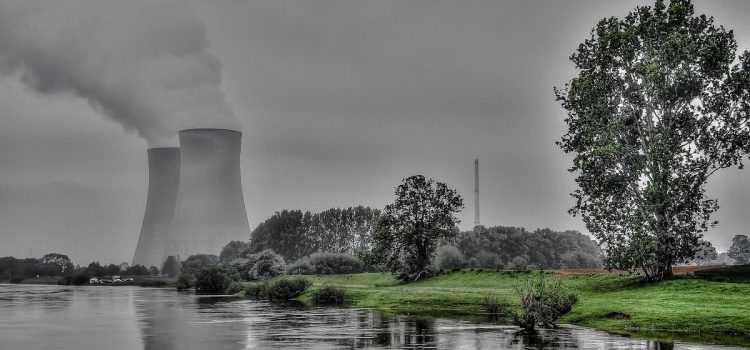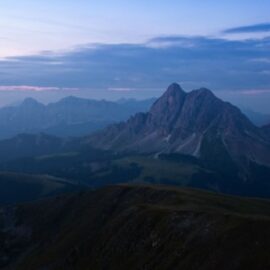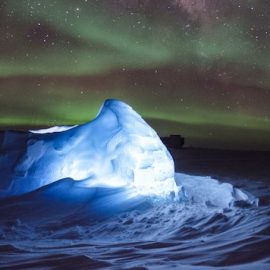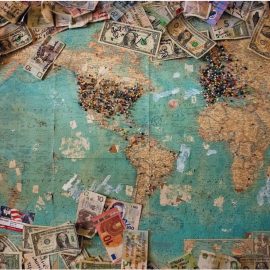

This article is an excerpt from the Shortform book guide to "Apocalypse Never" by Michael Shellenberger. Shortform has the world's best summaries and analyses of books you should be reading.
Like this article? Sign up for a free trial here.
Why is it more expensive to build nuclear power plants in the US than in other places? Is the anti-nuclear movement doing more harm than good?
According to award-winning science writer Michael Shellenberger, nuclear power is the solution for the foreseeable future when it comes to our ever-growing demands for energy. In Apocalypse Never, he makes the case for nuclear energy and explains who’s standing in the way.
Read more to learn Shellenberger’s take on the nuclear power issue.
Michael Shellenberger on Nuclear Power
The primary driver of climate change, and the most important issue to tackle, is society’s ever-growing energy consumption. As much as wind and solar power meet the romantic ideal of “natural energy,” they simply don’t meet the energy needs of present-day or future generations. According to Michael Shellenberger, nuclear power is the answer. He outlines why it’s a safe, clean, and reliable solution. And, he explains how politics and emotion can get in the way of necessary and beneficial progress, arguing that anti-nuclear propaganda has drastically clouded public opinion on the topic.
The Case for Nuclear Power
What’s needed instead is a clean, energy-dense alternative. The answer is nuclear power, which is reliable, productive, and has a minimal impact on the environment. Shellenberger explains the advantages of nuclear power and addresses the reservations and misconceptions many people have about it.
Nuclear power is the most energy-dense fuel source we have available—the amount of nuclear fuel required to generate power is infinitesimal next to the amount of fossil fuels burned by coal and natural gas plants. It’s reliable and affordable enough to provide for the world’s rising energy needs. Building nuclear plants has been costly in the US, which Shellenberger attributes to environmental regulations purposely designed to make nuclear power cost-prohibitive. However, in countries such as South Korea, assembly-line construction techniques have been shown to reduce the cost of newly designed nuclear plants. Modern plants also last longer with less upkeep than those in the US, which are based on designs from the 1960s.
Unlike the byproducts of other power sources, nuclear waste is not released back into the environment. Once used, nuclear fuel rods are cooled, then encased in nigh-impregnable steel and concrete. Even if a container were to break, which Shellenberger says is highly unlikely, very little would get loose into the environment because there’s so little of it to begin with. There are many places in the world where the natural background radiation is higher than that at man-made radiation sites.
The most realistic cause of nuclear material being released into the wild is in the case of a reactor meltdown, of which there have been three—at Three Mile Island in 1979, Chernobyl in 1986, and Fukushima in 2011—but the impact of those accidents is widely overstated. The Chernobyl disaster resulted in fewer than 100 deaths attributed to radiation. For the other two incidents, the nuclear death toll was zero. Shellenberger points out that other energy-related disasters have been far more devastating, such as the collapse of the Banqiao hydroelectric dam that resulted in 200,000 deaths. Yet no one has called for a ban on hydroelectric power.
How the Anti-Nuclear Movement Gets in the Way
Environmentalists haven’t always been against nuclear power. In the 1960s, it was seen as the obvious way to meet rising energy demands while preserving natural areas. Shellenberger writes that the shift began when some environmentalists deliberately conflated nuclear power with nuclear fallout to stop plants from being built on lands they wanted to conserve. This led activists who were against nuclear weapons to split their focus to include nuclear power. The idea that nuclear energy was as dangerous as nuclear fallout went viral among environmental groups in the 1970s, and by now it’s been infused into environmental doctrine.
The film and television industry has also played an important role in turning nuclear power into a boogeyman, with exploitative and inaccurate depictions that drum up the “scare factor” of nuclear energy. However, Shellenberger admits that the nuclear industry did itself no favors by retreating from the public debate and letting the media’s misinformation go unchallenged. As a result, most of the world is phasing out nuclear power.
Meanwhile, abandoning the nuclear option has its cost. Deaths and illnesses from air pollution caused by the burning of fossil fuel continue, and in some parts of the world, more forests are being cleared to make firewood for heating and cooking in homes. The rising output of solar and wind power have not been enough to offset the loss of nuclear energy, and in places where nuclear plants have closed down, the price of electricity has only increased, placing a greater economic burden on people’s lives.

———End of Preview———
Like what you just read? Read the rest of the world's best book summary and analysis of Michael Shellenberger's "Apocalypse Never" at Shortform.
Here's what you'll find in our full Apocalypse Never summary:
- An assessment of the climate crisis from a rational perspective
- How climate change alarmists are doing more harm than good
- The problems with renewable energy and why we should switch to nuclear






